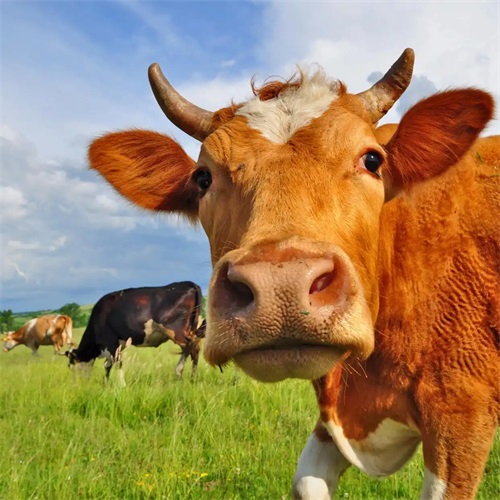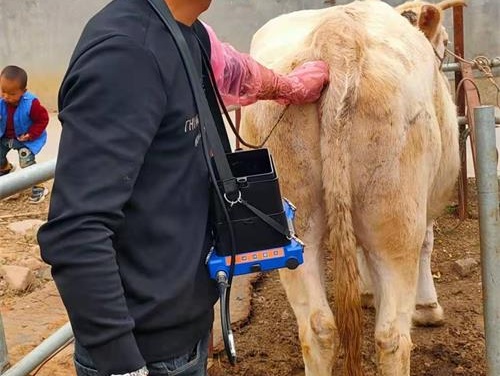Reproductive efficiency is a cornerstone of modern dairy and beef cattle production. Cows that fail to conceive after multiple breedings — often referred to as suffering from “repeat breeding” — pose a significant economic burden due to extended calving intervals, reduced milk production, and unnecessary veterinary costs. One of the most powerful tools to diagnose and manage reproductive inefficiencies in cows is veterinary ultrasonography. This non-invasive and real-time imaging technology allows for detailed observation of ovarian structures, uterine health, early pregnancy, and abnormalities that often go undetected through manual palpation.

This article explores how siêu âm thú y is used to evaluate reproductive functions in cows and identify the underlying causes of repeated breeding failure, with particular emphasis on micronutrient deficiencies and common reproductive pathologies. The discussion incorporates both clinical observations and insights drawn from international veterinary practices.
Using Ultrasound to Visualize Cow Reproductive Health
Veterinary ultrasound, particularly B-mode real-time ultrasonography, is extensively used in cattle reproduction management. It enables precise visualization of ovarian follicles, corpus luteum, uterine contents, and pregnancy structures, usually through transrectal scanning. Unlike traditional methods, ultrasound provides a direct view of internal reproductive tissues, allowing veterinarians and producers to assess the cow’s reproductive status at any point during her cycle.
In cases of repeated breeding failure, ultrasound becomes indispensable for identifying abnormalities such as cystic ovaries, uterine infections, delayed ovulation, poor luteal development, or tubal obstructions. These issues are often undetectable without imaging.

Micronutrient Deficiencies and Their Reproductive Impacts
Trace minerals play a critical role in reproductive performance, and deficiencies in certain elements can significantly alter fertility. Ultrasound has made it possible to correlate visual ovarian and uterine abnormalities with specific micronutrient deficiencies. Below are the most commonly implicated elements:
Zinc (Zn)
Zinc is vital for hormone synthesis and the proper functioning of reproductive organs. It influences the synthesis of prostaglandins and supports luteal activity. Zinc deficiency in cows often leads to ovarian cyst formation and disrupted estrous cycles. On ultrasound images, such cysts appear as large, fluid-filled dark areas on the ovary, indicating poor follicular development. Additionally, cows with zinc deficiency are prone to early embryonic loss, which may manifest on ultrasound as empty uterine horns following insemination, or resorption of the embryonic sac.
Selenium (Se)
Selenium enhances both reproductive and immune function. When cows are selenium-deficient, ultrasound often reveals poorly developing follicles and an increased incidence of ovarian cysts. These cows may also exhibit irregular or absent estrus cycles. Moreover, selenium deficiency is associated with a higher risk of uterine infections, abortions, and fetal malformations — all of which can be detected through routine scanning.
Cobalt (Co)
Cobalt is necessary for vitamin B12 synthesis, which affects energy metabolism and ovarian activity. A deficiency can delay puberty and reduce ovarian responsiveness. Ultrasound of cobalt-deficient cows often reveals poor follicular development, delayed ovulation, and occasionally abnormal fetal calcification in pregnant cows. In some cases, the fetus may appear undersized or developmentally delayed, making early pregnancy loss more likely.
Manganese (Mn)
Manganese is essential for normal follicular growth and fetal skeletal development. When manganese levels are low, cows frequently suffer from estrous irregularities, low conception rates, and congenital calf deformities. During follicular scanning, veterinarians may observe follicles that fail to mature or ovulate. In pregnant cows, fetal malformations such as limb deformities or delayed ossification may be detectable by advanced ultrasound equipment, especially in later gestation.
Ultrasound Diagnosis of Common Causes of Repeat Breeding
Beyond nutritional causes, there are several physical and pathological conditions that lead to repeated breeding failure in cows. Ultrasound enables accurate diagnosis and guides targeted interventions.
-
Oviductal Obstruction
A blocked oviduct prevents sperm from reaching the ovum or the fertilized egg from reaching the uterus. Such obstruction is often due to salpingitis, typically a result of uterine infections or improper uterine flushing. On ultrasound, inflamed or blocked oviducts may appear thickened or filled with echogenic fluid, indicating inflammation or scarring. Though not always easy to detect, high-resolution ultrasound and contrast studies can sometimes pinpoint the blockage.
-
Uterine Infection and Subclinical Endometritis
Uterine infections, including endometritis and metritis, are frequent culprits behind infertility. These infections can persist silently, especially following calving or poor hygiene during artificial insemination. On ultrasound, infected uteri typically appear enlarged, with thickened walls and echogenic fluid or debris within the uterine lumen. In cases of subclinical infection, the uterine lining may look irregular or show signs of edema, which impedes embryo implantation and development.
-
Poor Artificial Insemination Practices
Unhygienic handling of insemination equipment or improper technique can introduce bacteria into the uterus and cause endometritis. Additionally, poorly timed insemination in relation to ovulation may result in failed conception. In such cases, ultrasound post-insemination may reveal healthy follicles but no evidence of pregnancy. A skilled ultrasonographer can detect whether ovulation occurred and whether luteal development was sufficient to support embryo implantation.
-
Hormonal Imbalances
Disruptions in hormone production, especially of luteinizing hormone (LH) and follicle-stimulating hormone (FSH), can prevent proper follicular maturation and ovulation. Cows with hormonal imbalance may appear to cycle normally but fail to ovulate or form a functioning corpus luteum. Ultrasound helps by revealing anovulatory follicles or luteal structures that regress prematurely, explaining why conception fails despite apparent estrus.
-
Nutritional Deficiencies Beyond Trace Minerals
General energy and protein deficits, particularly during the transition period or early lactation, can lead to ovarian inactivity or failure to sustain pregnancy. Ultrasonographic findings in such cows often show small, inactive ovaries and signs of early embryonic resorption. In pregnant cows, malnourishment is associated with higher incidence of fetal deformities and growth retardation, which can be tracked through gestational ultrasound.

Foreign Perspective on Reproductive Ultrasonography
Globally, veterinary ultrasonography has revolutionized cattle fertility management. In countries like the United States, Úc, and parts of Europe, real-time ultrasound scanning is now a routine part of herd health protocols. According to studies from the University of Wisconsin and the University of Guelph, routine ultrasonographic evaluation of postpartum cows has significantly reduced the incidence of repeat breeding by enabling early intervention.
Moreover, portable ultrasound units have empowered farmers and technicians to carry out on-site scanning, improving response time and reducing costs. Internationally, the integration of ultrasound findings with hormonal assays, blood micronutrient analysis, and artificial insemination scheduling has greatly improved conception rates, particularly in high-producing dairy herds.
Kết thúc
Veterinary ultrasound is more than just a diagnostic tool — it’s an essential part of modern reproductive management in cattle. By allowing early detection of reproductive abnormalities, hormone imbalances, micronutrient deficiencies, and anatomical disorders, ultrasound plays a crucial role in addressing repeat breeding problems. Combined with good nutrition, hygiene, and breeding practices, its widespread use offers hope for improving reproductive performance and overall herd profitability.
As research and technology continue to advance, the integration of ultrasound imaging into precision livestock management will become even more indispensable. For farmers and veterinarians alike, investing in ultrasonographic monitoring is not only practical but economically justified.